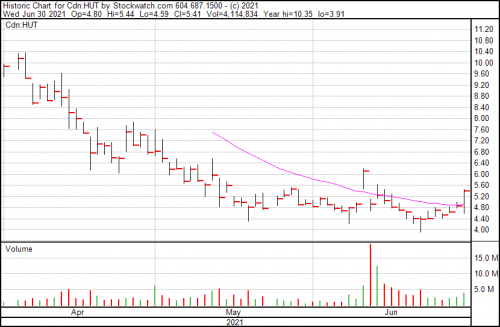If you’re new to the crypto-space, and you on-boarded during the bull run thinking investing in Bitcoin would always be mana from heaven and smooth sailing, then this is for you.
“All news reports indicate that the sky is not falling.”
Let’s revisit economics 101 for a moment. Prices dip because folks are selling, and it also presents a buy-option for other folks looking to get into the market. The same is true of the Bitcoin hashrate and attendant difficulty.
China’s crackdown on all things Bitcoin presented a system shock to Bitcoin’s hashrate, as it scattered miners across the planet. The difficulty of mining new blocks Bitcoin is updated every two weeks based on the activities of miners in the space. So when people bow out, the difficulty goes down and existing miners either pick up the slack or new miners enter.
There’s an elegance in the way the system absorbs the inevitable shocks. So far. There’s no way Satoshi Nakamoto could have predicted all the potential shocks the bitcoin network and blockchain could potentially endure, so it’s important to be mindful of your investment. Complete faith is a fool’s game. But this? The notion of a country as powerful as China turning on the tech?
We’ve always said the only way to kill the bitcoin blockchain would be if a country like China (or the United States) turned on it, but that was in 2016. It’s five years later and Bitcoin has spread itself around the world. Even such, its mining and production arm is, or was until last month, too tightly centralized in China. Now? Not so much. We can think of it in terms of a disease and decentralization as the vaccine against further outbreaks. If miners are spread out to different geographic regions, then no one country will have the ability to overtly affect mining like China has, and we won’t see a repeat of this variety of hit.
That’s why Hut 8 Mining (HUT.T) pulling the trigger on a USD$44.373 million purchase agreement for 11,090 new Bitcoin miners from SuperAcme in Hong Kong, for $44/Terahash comes as no surprise. They’re well aware the sky is definitively not falling and shocks and volatility are the price of doing business. The delivery date for the prospective miners is October 2021 and full deployment by December. This purchase adds to a smaller purchase made earlier this week, which should be delivered and operational by July.
“We are excited to have identified this unique opportunity to purchase MicroBT equipment that will enable us to almost double our hashrate before the end of the year and substantially increase the number of Bitcoins earned on a daily basis,” said Jaime Leverton, chief executive officer of Hut 8 Mining.
That’s right.
Hut 8 recognizes this a chance to double-down on their mining operations while the market conditions allow. The production capacity increase when everything is fully installed will jack their numbers to 1.081 E/H. That’s exahashes per second, or one quintillion hashes per second or if you prefer a concrete number, it’s 1 with 18 zeros. The overall hashrate for the Bitcoin blockchain right now is 101 TH/s, or terahash or a trillion hashes per second. Figure out your own number of zeros. The hashrate and difficulty are expected to climb as miners enter the game, but that’s going to be a long process. In the meantime, that’s good for companies like Hut 8, which will pump up the electrical juice to make as many bitcoins as they can, and also good for individual investors like us, who can take short-term advantage of reduced Bitcoin prices.
How good is it? Here’s how good.
“As recently reported, with the exodus of bitcoin network hashrate from China, latest estimates suggest a sharp reduction in network difficulty on July 2, 2021, in the range of 24% to 26%. While early in the transition, it is anticipated that the reduction in network difficulty will increase Hut 8’s current average self-mined production by approximately 2 Bitcoin, from 6.5 – 7.5 Bitcoin per day, to 8.5 – 9.5 Bitcoin per day, without any direct corresponding costs. After giving effect to (i) the announced hash rate expansion above (2.5 E/H plus 1600 Gigahash, expected to be in place by the end of 2021) and (ii) the anticipated reduction in network difficulty, all else being equal, Hut 8 estimates that its average daily self-mined Bitcoin will increase to 20 – 22 Bitcoin per day.”
Right now one Bitcoin is worth $34,830.35 and declining, but when the peculiar decentralized diaspora is sufficiently arranged, it won’t be staying there.
Making hay while the sun shines
Apropos of nothing we’re taking about—if you’re so inclined, you may want to either take profits or shapeshift to greener pastures (like QCAD if you’re Canadian or USDC if you’re not—both excellent stablecoins—or hell, maybe consider shifting into stocks) and wait for 14-days of solid green-line growth in the price of the asset to consider getting in.
There’s zero point in losing any of your existing stake if you can avoid it. The ability to move your stake from decentralized (and therefore, volatile) coins to centralized stablecoins, is one of the hidden boons of the cryptocurrency space. In terms of opportunity cost, its easier to give up a small few percentage points (because the service has a cost, of course) and buy in at bottom than let your stake deplete with the price.
As always, though, your mileage may vary. If it varies too much get a better exchange.
Regardless, Hut’s addition should bring their total installed capacity to 2.5 E/h, and their new miners will make up the first fleet in the company’s 100 MW facility being developed in cahoots with Validus Power, a non-polluting source of renewable energy.

Hut 8 Mining is up $0.51 today and presently trading at $5.37. They have been following Bitcoin’s down-trend (as crypto-related companies tend to do) but they likely won’t stay that way when the asset’s price begins to rise.
—Joseph Morton






